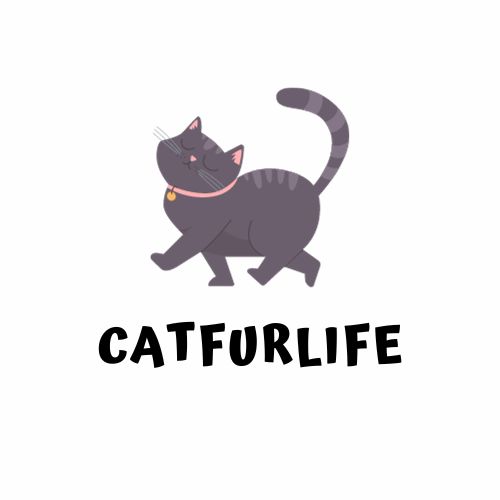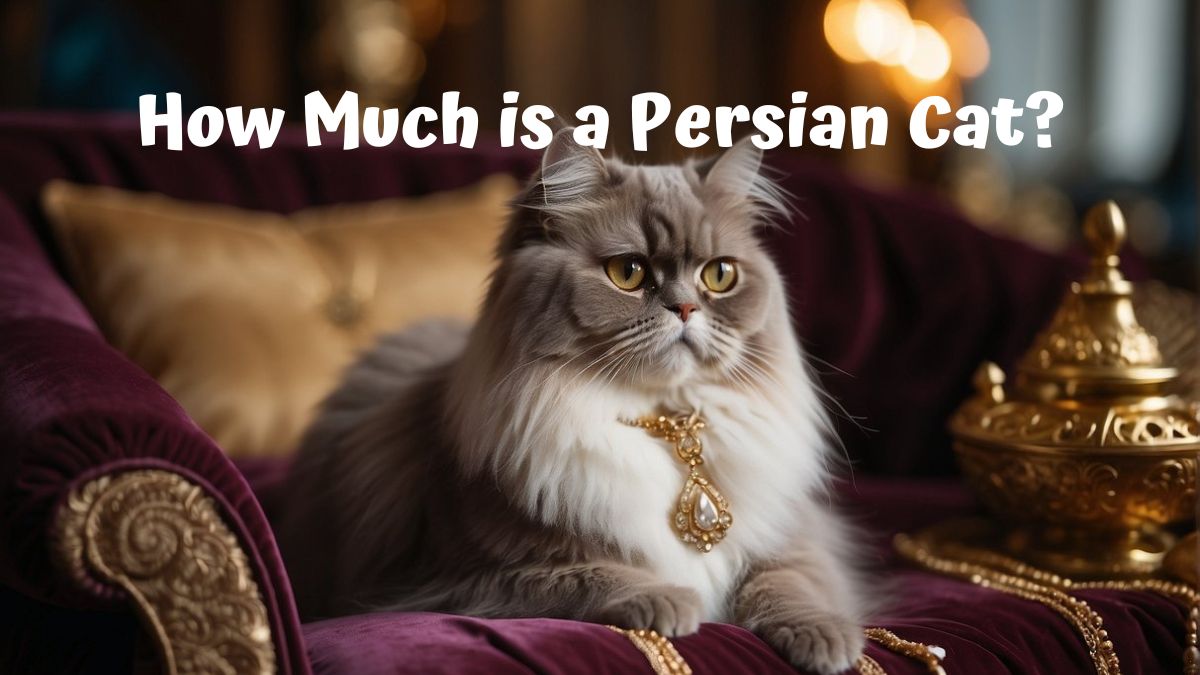The Persian cat is distinguished by its luxurious coat and long fur, making it one of the most recognizable breeds among cat enthusiasts.
Their heritage as one of the oldest cat breeds dates back to the 17th century when Italian nobleman Pietro della Valle was believed to have introduced these elegant felines to Europe.
Known for their calm demeanor and striking features, these cats quickly found favor with notable historical figures, including Queen Victoria and Florence Nightingale.
The cost of a Persian cat can reflect its prestigious background and extensive breeding history.
Prospective owners should be aware that the price tags of these feline companions may vary considerably based on the pedigree, coat color, breeder reputation, and other factors.
When considering adding a Persian cat to one’s family, it is crucial to understand the implications of such a decision, including ongoing maintenance for their long fur.
Understanding Persian Cat Pricing
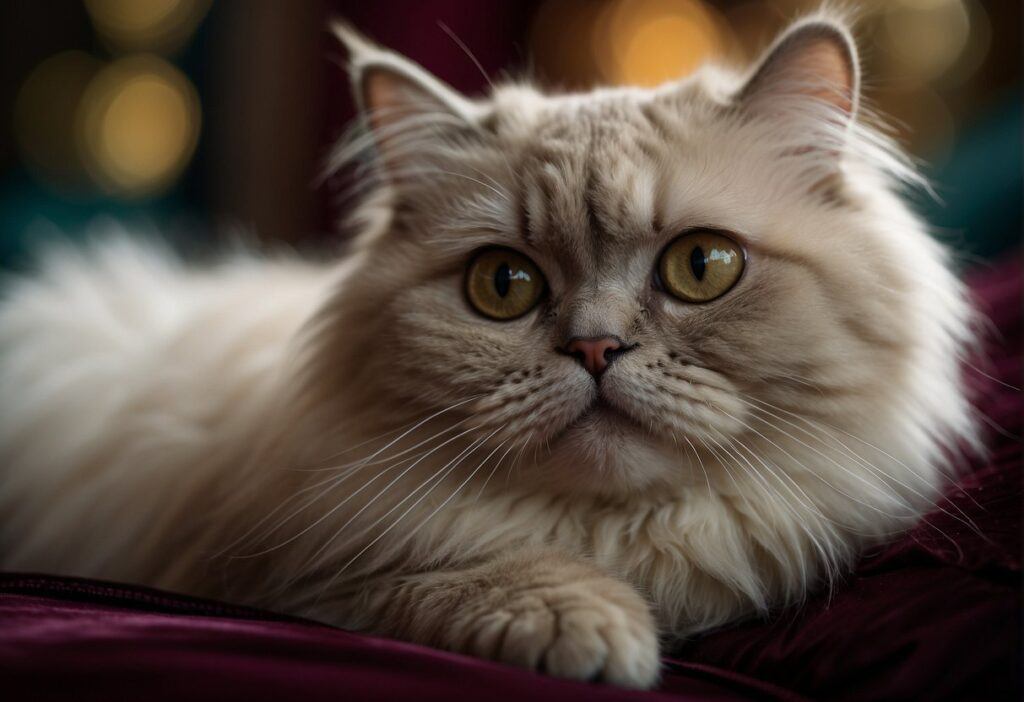
The cost of a Persian cat can vary widely due to various factors, including age, pedigree, and maintenance requirements. It’s important to understand these details before considering a purchase.
Factors Influencing Cost
Several key elements determine the price of a Persian cat.
Firstly, pedigree is a major factor—cats with a proven lineage from a reputable breeder can cost more.
Health and appearance also contribute to the pricing, particularly for show-quality cats, which demand a higher price due to their adherence to breed standards.
The cat’s color and coat pattern, often distinctive in Persians, can influence pricing.
High maintenance, including regular grooming due to their long fur, must be factored into the long-term cost.
| Factor | Description |
|---|---|
| Pedigree | Higher costs for purebred and documented lineage. |
| Health | Initial veterinary care and future health conditions. |
| Show-Quality | Alignment with breed standards increases price. |
| Maintenance | Regular grooming and care costs. |
Average Price Range
Persian cats typically cost between $800 and $5,000. Standard, pet-quality Persian kittens might be on the lower end, while top show-quality cats can reach the upper price tiers.
This range accounts for the bare purchase cost without considering any additional expenses.
Price Differences by Age
Persian kittens may carry a different price tag compared to adult Persian cats.
Kittens are often more expensive due to their high demand and the cost of care they have received from the breeder.
They may also come with additional expenses, such as a security deposit, especially if reserved before reaching an adoptable age.
In contrast, the price for adult cats may be reduced if they are retired from breeding or show.
Other Financial Considerations
Owning a Persian cat incurs additional financial commitments beyond the purchase price.
Prospective buyers should consider ongoing expenses such as high-quality food, regular veterinary care, potential treatment for health conditions, and grooming supplies.
| Financial Consideration | Details |
|---|---|
| Initial Purchase | Covers initial acquisition from a breeder. |
| Veterinary Care | Regular check-ups and emergency care costs. |
| Grooming | Frequent professional grooming expenses. |
| General Maintenance | Food, litter, toys, etc. |
Choosing a Persian Cat Breeder

When selecting a Persian cat breeder, focus on their reputation and the geographical considerations that will affect your decision.
A breeder’s credibility and location significantly impact the overall experience and the health of the Persian cat you intend to bring into your new home.
Identifying a Reputable Breeder
To ensure you are dealing with a reputable breeder, look for specific indicators of quality and reliability.
A good breeder should provide extensive documentation of the cat’s health history and information about both parents, especially regarding any genetic issues common in purebred Persians.
They should also be transparent about the conditions in which the kittens are raised and be willing to answer all your questions thoroughly.
Key signs to identify such breeders include the following:
- Health Records: Evidence of regular veterinary care, vaccinations, and genetic screening.
- Registrations: Registration with recognized bodies such as The Cat Fanciers’ Association (CFA) in the United States or similar organizations in North America.
- Breeder Engagement: Active participation in cat shows or breeder clubs, indicating a commitment to the breed’s standards.
Breeder Location Considerations
The location of your breeder is another critical factor:
- Proximity: A closer breeder allows an in-person visit to observe the environment and the kitten’s interactions with the breeder, which is essential for assessing socialization.
- Transportation: Longer distances may require the kitten to be shipped to your home, which can be stressful for the animal and increase the risk of health issues during transit.
Consider these logistical elements carefully when introducing a Persian cat into your new home, as they affect the animal’s well-being and adaptation process.
Caring for Your Persian Cat
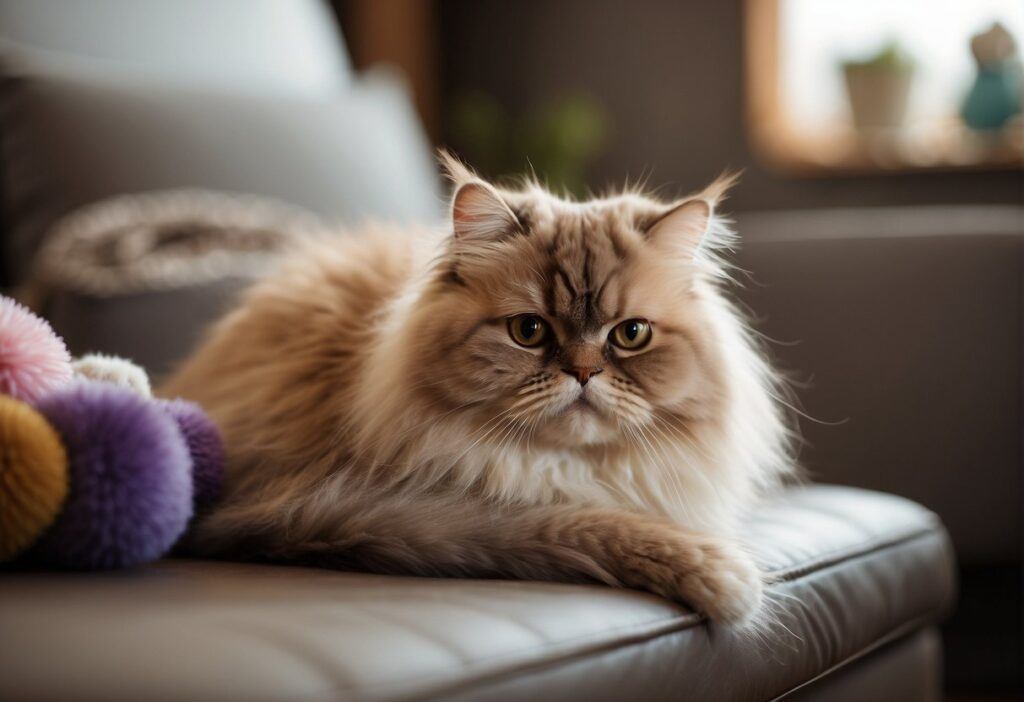
Proper care is essential for maintaining the health and happiness of a Persian cat.
From their daily grooming needs to understand their unique health considerations and personality traits, owners should be prepared to provide the best care possible.
Daily Grooming Routine
Persian cats have long, thick coats that require daily brushing to prevent mats and tangles.
A wide-toothed comb or a specialized grooming brush is advised. Regular bathing, typically once a month, is also necessary to keep their coat clean and reduce the buildup of oils.
Healthcare and Common Conditions
Owners should be vigilant about their Persian cat’s health.
Common health conditions include polycystic kidney disease, dental disease, heart disease such as hypertrophic cardiomyopathy, and progressive retinal atrophy.
Establishing regular check-ups with a veterinarian can help detect and manage these health problems early.
Regular dental cleanings are important to prevent the development of dental disease.
Monitoring for signs of eye discharge can help identify issues known to affect this breed, such as haircoat disorders.
Behavior and Personality Traits
Persian cats are known for their calm and affectionate nature.
They thrive in serene environments and often bond closely with their favorite human. As primarily indoor cats, they are well-suited for households with older children.
Despite their laid-back personality, they require interaction and enjoy playtime with their owners, contributing to their mental well-being and strengthening their bond.
Understanding Persian Cat Characteristics
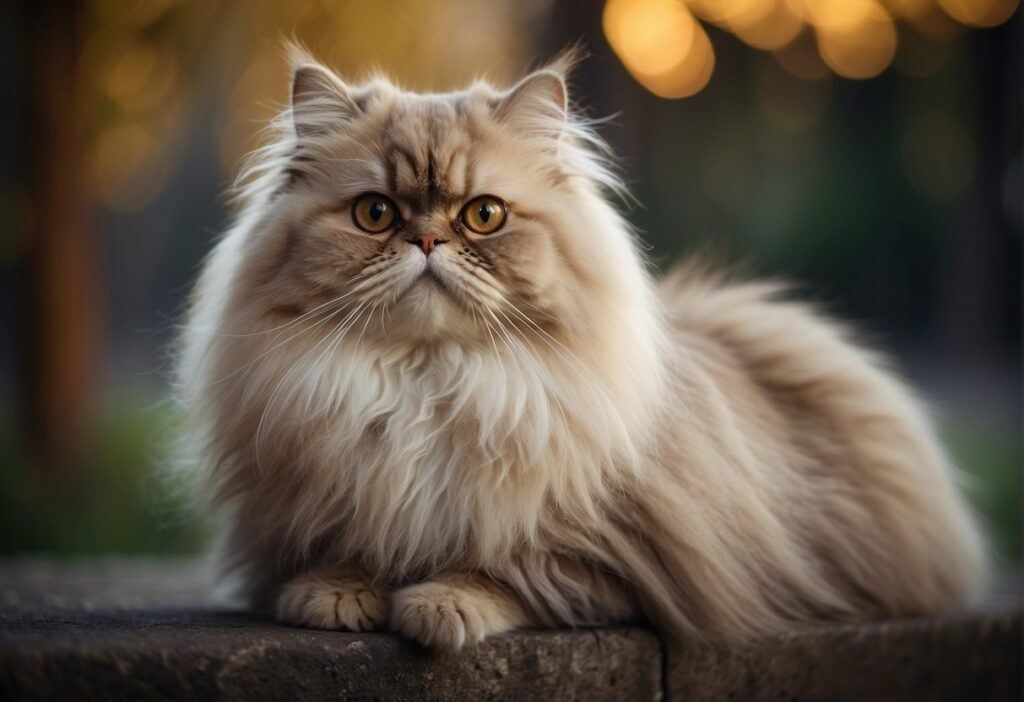
The Persian cat breed is renowned for its distinctive physical characteristics and long, aristocratic lineage dating back to the 17th century.
Physical Attributes
Persian cats are easily recognizable by their long, luxurious coats and distinctive flat faces.
They have a short muzzle and round head complemented by large, expressive eyes that give them a sweet facial expression.
Their eye color can vary and is often linked to their coat color, which spans various shades and patterns.
The breed’s signature long coat demands regular grooming to prevent tangles and mats. Notable physical traits include:
- Face: Flat with a short muzzle
- Eyes: Large, round, and potentially big
- Coat: Long-haired with various colors
- Nose: Short
- Body: Sturdy and well-built
History and Breed Origins
The Persian cat is one of the oldest cat breeds, tracing its origins to the 17th century.
Pietro della Valle, an Italian nobleman, is credited with bringing long-haired cats from Persia to Europe, marking the beginning of the breed’s Western development.
In the late 1800s, the breed caught the attention of nobility; Queen Victoria and Florence Nightingale were among its notable admirers.
As it was once known, the Persian Longhair likely had ancestors among Angora cats and shares a resemblance with the Turkish Angora, yet has a distinct lineage and history. Key historical points include:
- Origins: It began in Persia, now known as Iran
- Introduction to Europe: By Pietro della Valle
- Famous Admirers: Queen Victoria, Florence Nightingale
- Related Breeds: Turkish Angora, but distinct
- Development: Established as a breed in the late 1800s
Related: Purring Persians & Heavenly Himalayans: A Complete Guide to Breed Characteristics
Adopting from Rescues or Shelters
Benefits of Adoption
Adoption from rescues or shelters offers several key benefits:
- Cost-Effective: Typically, the cost of adopting a Persian cat from a shelter is lower than purchasing from a breeder.
- Adoption fees usually cover initial veterinary costs such as vaccinations, spay/neuter procedures, and sometimes microchipping.
- Supports Animal Welfare: Choosing to adopt helps shelters provide for more animals in need, endorse the welfare of cats, and discourage poor breeding practices.
- Health and Behavior Assessments: Shelters often provide health checks and behavior assessments, which help match a cat’s personality with a suitable owner.
- Potentially Quicker Process: Finding a Persian through a rescue might be faster than waiting for a breeder.
Example of an adoption cost table for a Persian cat:
| Expense | Cost Range |
|---|---|
| Adoption Fee | $75 – $150 |
| Vaccinations | Included |
| Spay/Neuter | Included |
| Microchip | Included |
Considerations for New Owners
Prospective Persian cat owners should take the following into account:
- Preparation: Owners need to prepare their homes for their new feline friend.
- Essential items include a litter box, a cat tree for climbing, toys, and grooming tools for a Persian’s long coat.
- Healthcare: Persians may have breed-specific health conditions, so veterinary costs should be considered.
- Patience for Adjustment: It’s vital to provide a stress-free environment for the cat to adjust to its new home, ensuring a happy life.
- Commitment: Adoption is a commitment to care for the cat throughout its life, factoring in time and financial responsibility.
Introducing Cory Haasnoot, a devoted father, loving husband, and enthusiastic cat lover. As a key content creator for CatFurLife.com, Cory blends his family values and passion for felines into engaging and informative content. He brings a unique perspective to the site, sharing cat care tips and how cats can enrich family life and bring joy to households.
